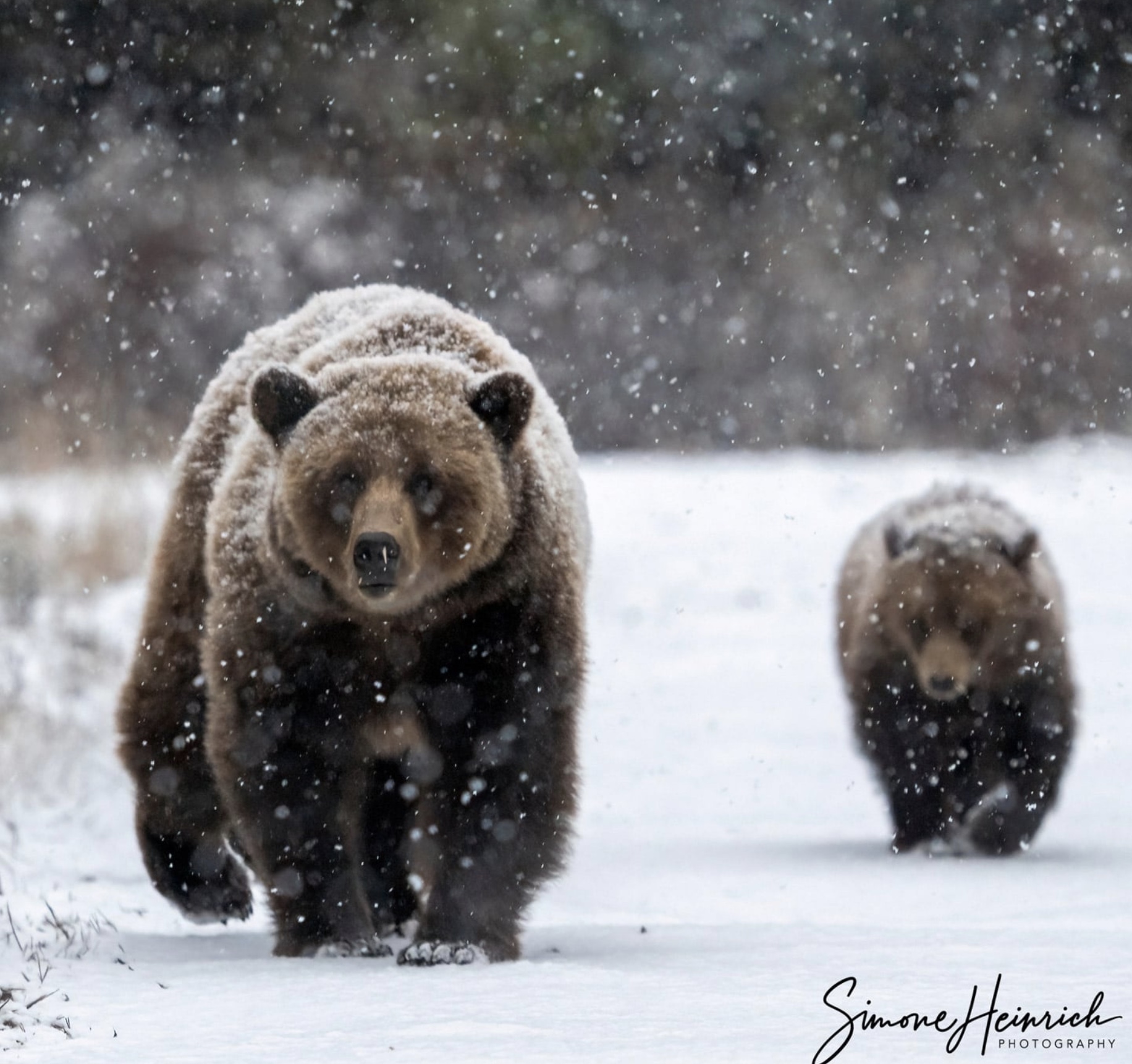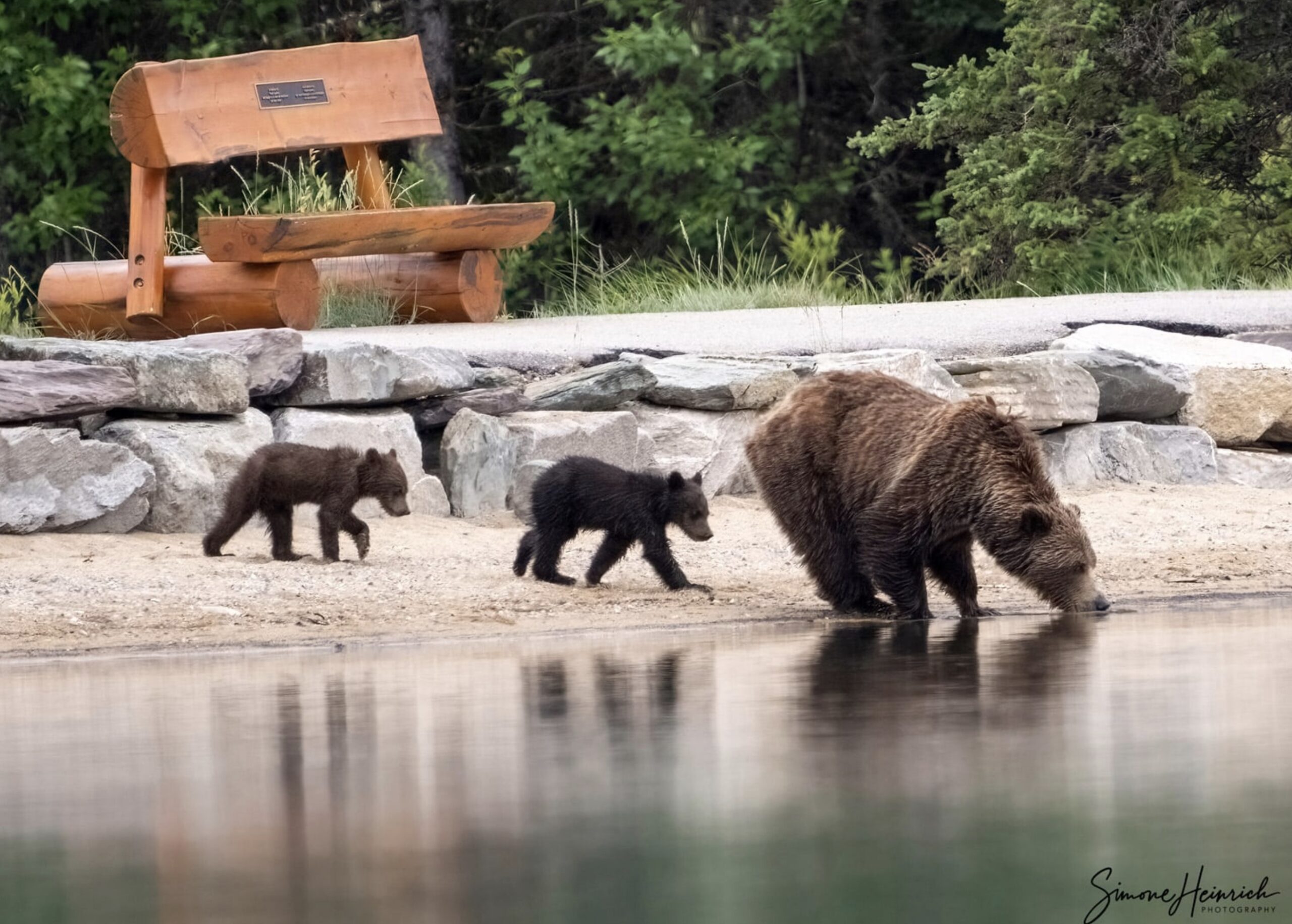Jasper National Park wildlife officials have increased the urgency of their bear management strategy after a family of grizzlies swam into another popular Maligne Lake campground last weekend.
On June 16, nine days after sniffing around Coronet Creek campsite on the south end of Maligne Lake, three increasingly-well known Jasper National Park grizzly bears invited themselves into another campsite, this time closer to Maligne Lake’s Home Bay.
The bears—the same mother and cubs whose bold behaviour at Lake Annette last year got them captured and relocated out of the townsite—were making themselves at home at Hidden Cove, a paddle-in campsite five kilometres from Maligne Lake’s busy boat launch.
And not long after their short campground rendezvous, the bears made their way to the Maligne Lake boat launch and had Parks Canada staff scrambling to cordon off trailheads and redirect visitor traffic.
“We’re trying to give the bears space without pushing them into people,” said JNP’s human wildlife coexistence specialist, James McCormick. “That’s the kind of juggling we have to do when they’re moving like that.”
When the grizzlies—a mother and two yearling cubs—first showed up at Hidden Cove on Sunday, June 16, camper Rob Pacholok was rolling up his sleeping pad, getting ready to pack up after spending two nights at one of his favourite spots in the Canadian Rockies. It was about 9:30 a.m.

Suddenly, Pacholok heard a commotion at an adjacent tent pad behind a small knoll. His fellow campers, which included family and friends, were suddenly “hollering and screaming,” he said.
“They were yelling ‘hey bear,’” Pacholok recalled. “I thought they were just horsing around.”
They weren’t. As Pacholok poked his head over the knoll, he saw three grizzly bears walking toward him in single file.
“They looked right at me but kept their steady pace,” Pacholok said.

The 67-year-old said the bears then strolled right past his partly-disassembled tent and sauntered into the wooded area behind.
“She went by me…the cubs were right behind her,” he said.
A minute earlier, the bears had similarly startled Pacholok’s niece. They had walked up to the tenting area from near the campsite’s eating area, using the skinny trail that leads to the tent pads. Like Pacholok, his niece backed off when she saw them approach. Both agreed the bears did not display any aggressive behaviour.
“None whatsoever,” he said.
What he did notice, was that the sow was soaking wet, Pacholok said. He soon found out why: the bears had swum across a shallow part of the lake to access the Hidden Cove isthmus. Five minutes after seeing them disappear into the woods, they re-emerged and waded into the lake again, swimming back the way they came.
“Seeing them swim across was so cool,” Pacholok said.
When Pacholok got out of his canoe at the north end of the lake to retrieve his vehicle, he noticed Parks Canada tape indicating temporary closures next to nearby trailheads, along the shoreline and around the washrooms.
“As soon as I saw the red tape I said ‘yep, they’re here,'” he said.
Sure enough, the bears had made their way to the busy lake access point. They were grazing in a meadow away from the crowds when Pacholok left the parking lot, but the following day there were on the lake’s eastern shoreline, which is typically a bustling hub of tourist activity. The popular walking trail that leads to Mary Schaffer Point was subsequently closed off to visitors.
Parks staff have been using different management tools—loud noises and chalk bullets, for example—to keep the bears away from the roadway. McCormick said the last thing the wildlife team wants is for the bears to associate humans with a food reward.
“We’re trying to recondition her to be more wary, to feel less comfortable coming up to people,” he said. “We don’t want her to have any association between people and having a source of food.”

So far, so good. The team got a close look at the family of bears, McCormick said, and noticed they were moving well and feeding with a robust appetite on natural food sources.
“These are all things that reinforce these are bears doing bear things,” McCormick said.
Grizzly bear cubs typically stay with their mother until they’re at least two years old. McCormick expects this family to spend the summer together.
Pacholok’s family hails from the Athabasca area, in northern Alberta. They are bear-aware and respectful of wildlife, they said.
“We all know with grizzlies things can end poorly,” he said.

As the bear warning remains at Maligne Lake and JNP’s wildlife team continues to keep a close eye on the grizzlies, officials are doing their best to ensure that’s not how the next chapter of this particular story will be written—for the public, but also for the bears.
“Everything is looking good for now,” McCormick said.
Bob Covey // bob@thejasperlocal.com


